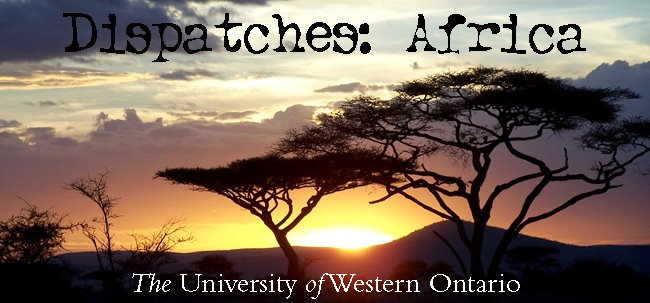 Kitabi, Rwanda
Kitabi, Rwanda – Food plays a central role in Rwandan culture and is a major aspect of most events and gatherings. Thanks to an excellent climate for agriculture, it’s also abundant, which is so rarely the case on this continent.
Tropical fruit is served at most meals and generally includes some combination – or all – of tree tomatoes (sweet, unlike field tomatoes), passion fruit, pineapple, banana (sometimes the mini version) and paw paw, a sort of sweet melon.
With the exception of one day where soup was also served as an appetizer, breakfast has been the same every morning since I got here: fruit – either before or after – a couple slices of dry bread (or sometimes a sweet bread) and a pseudo-omelette for making an egg sandwich. Daniel, the ‘house boy’ (not my term) who prepares our meals at home in Kitabi, puts onions in, making them that much better.
As with my experience in Kenya and Tanzania, the starch-laden lunches and dinners are hardly Atkins-friendly. At each, you can expect to be served at least two or three of fried or roasted potatoes, rice, sweet potatoes, fried or mashed bananas, or spaghetti. Though generally made from cassava here, ugali can also be found, but it is not as prevalent as it was last year. I had heard fried plantains could be found everywhere here, too, but I haven’t found any yet.
Mashaza – peas, often salty and with carrots or tomato – are a staple found on most plates. Other typical meal-time vegetables include cabbage, collared greens, tomatoes or carrots, often shredded into a salad with onions (usually topped with mayonnaise, which I avoid here). Vegetables don’t tend to be much of a focus. While we don’t tend to eat meat at home, meals on the road have typically included fish (fried whole, or in filets), chicken (split into pieces and eaten with your hands) or beef, usually in a sauce.

Unlike my (granted, relatively limited) time elsewhere in East Africa, however, I’ve found that Rwandans devote more attention to flavour, liberally using herbs like rosemary, particularly in meat sauces and gravies. Eating out, you’ll often find yourself lining up at a buffet. Unlike North America, though, you’re only allowed to take one trip. You may pile your plate high, so get your fill the first time. In larger centres, you can also find French, Italian and Chinese restaurants.
For faster food, brochettes – goat or beef kebabs – and chips (fries) are ubiquitous. The brochettes are prepared with onion and seasoning, and are particularly good when they don’t carry with them the lighter fluid flavour of the gas over which they have been broiled. Roadside, it is also quite common to find men standing around fire pits roasting a dry corn that really ends up tasting like popcorn.
I’m happy to say that, while I came prepared with emergency food, I haven’t needed any of it (except during my layovers en route). The food here is really quite good.
I’ll write about beverages another time.
Bon appétit!
 London, Ontario, Canada – Mounds of snow rest on the side of the road, blackened like smokers’ teeth. The listless wet grass mopes in faded browns as the swollen river climbs the banks.
London, Ontario, Canada – Mounds of snow rest on the side of the road, blackened like smokers’ teeth. The listless wet grass mopes in faded browns as the swollen river climbs the banks.



















































